Science Is Competitive, Aggressive, Demanding. It Is Also Imaginative, Inspiring, Uplifting.
Science is competitive, aggressive, demanding. It is also imaginative, inspiring, uplifting.
Vera Rubin (via fyp-science)
More Posts from Er-zico and Others



Seen up close, the anatomy of a mosquito bite is terrifying. The most dangerous animal in the world uses six needle-like mouthparts to saw into our skin, tap a blood vessel and sometimes leave a dangerous parting gift. NEW from @kqedscience‘s Deep Look!
List of Free Science Books
Here’s an alphabetical list of all available free books. Note that many of the links will bring you to an external page, usually with more info about the book and the download links. Also, the links are updated as frequently as possible, however some of them might be broken. Broken links are constantly being fixed. In case you want to report a broken link, or a link that violates copyrights, use the contact form.
A
A Beginner’s Guide to Mathematica
A Brief Introduction to Particle Physics
A First Course in General Relativity
A New Astronomy
A No-Nonsense Introduction to General Relativity
A Popular History of Astronomy During the Nineteenth Century, Fourth Edition
A Review of General Chemistry
A Simple Guide to Backyard Astronomy
A Text Book for High School Students Studying Physics
A Tour of Triangle Geometry
About Life: Concepts in Modern Biology
Acoustic Emission
Adaptive Control
Advanced Calculus
Advanced Learning
Advanced Mathematics for Engineers
Advanced Microwave Circuits and Systems
Advanced Technologies
Advances in Computer Science and IT
Advances in Evolutionary Algorithms
Advances in Geoscience and Remote Sensing
Advances in Haptics
Advances in Human Computer Interaction
Age of Einstein
Aging by Design
AMPL: A Modeling Language for Mathematical Programming
An Introduction to Elementary Particles
An Introduction to Higher Mathematics
An Introduction to Many Worlds in Quantum Computation
An Introduction to Mathematical Reasoning
An Introduction to Mathematics
An Introduction to Proofs and the Mathematical Vernacular
An Introduction to Relativistic Quantum Mechanics
Analysis 1 (Tao T)
Analysis 2 (Tao T)
Analytic Functions
Astronomical Discovery
Astronomy for Amateurs
Astronomy Today
Astronomy with an Opera-Glass
Automation and Robotics
B
Basic Algebra, Topology and Differential Calculus
Basic Concepts of Mathematics
Basic Concepts of Thermodynamics
Basic Concepts of Thermodynamics Chapter 1
Basic Ideas in Chemistry
Basic Math: Quick Reference eBook
Basic Mathematics for Astronomy
Basic Physics
Basic Positional Astronomy
Basic Principles of Classical and Statistical Thermodynamics
Basic Principles of Physics
Basics of Physics
Beginner’s Botany
Biochemistry
Biochemistry (practice book)
Biology
Board Notes for Particle Physics
Book of Proof
C
Calculus
Calculus Based Physics
Celestial Navigation, Elementary Astronomy, Piloting
Circuit QED — Lecture Notes
Classical Dynamics
Classical Geometry
Classical Mechanics
Climate Models
Collaborative Statistics
College Algebra
Complex Analysis
Computational Geometry
Computational Introduction to Number Theory and Algebra
Computational Physics with Python
Conceptual Physics
Consistent Quantum Theory
Cook-Book Of Mathematics
College Physics
Crude Oil Emulsions- Composition Stability and Characterization
Curiosities of the Sky
D
Decoherence: Basic Concepts and Their Interpretation
Do We Really Understand Quantum Mechanics?
Differential Equations
Diophantine Analysis
Discover Physics
Dr. Donald Luttermoser’s Physics Notes
Dynamics and Relativity
E
Earthquake Research and Analysis
Earthquake-Resistant Structures – Design, Assessment and Rehabilitation
Einstein for Everyone
Electromagnetic Field Theory
Elementary Mathematical Astronomy
Elementary Linear Algebra
Elementary Particle Physics in a Nutshell
Elementary Particles in Physics
Elements of Astrophysics
Embedded Systems – Theory and Design Methodology
Encyclopaedia of Mathematics
Encyclopedia of Astrophysics
Engineering Mathematics 1
Engineering Mathematics with Tables
Essential Engineering Mathematics
Essential Physics
Exoplanet Observing for Amateurs
Experimental Particle Physics
F
Fields
Foundations of Nonstandard Analysis
Frequently Asked Questions about Calendars
Fundamental Concepts of Mathematics
Fundamentals of Analysis (Chen W.W.L)
Further Mathematical Methods
Fusion Physics
G
General Chemistry
General Relativity
General Relativity
Geometric Asymptotics
Geometry and Group Theory
Geometry and Topology
Geometry Formulas and Facts
Geometry Study Guide
Geometry, Topology and Physics
Geometry, Topology, Localization and Galois Symmetry
Great Astronomers
H
Handbook of Formulae and Physical Constants
High School Mathematics Extensions
Higher Mathematics for Engineers and Physicists
History of Astronomy
Homeomorphisms in Analysis
How to Use Experimental Data to Compute the Probability of Your Theory
I
Intelligent Systems
Intrinsic Geometry of Surfaces
Introduction to Astronomy and Cosmology
Introduction to Cancer Biology
Introduction to Chemistry
Introduction to Cosmology
Introduction to Elementary Particles
Introduction to General Relativity
Introduction To Finite Mathematics
Introduction to Particle Physics Notes
Introduction to PID Controllers
Introduction to Quantum Mechanics with Applications to Chemistry
Introduction to Quantum Noise, Measurement and Amplification
Introduction to Social Network Methods
Introduction to String Field Theory
Introduction to the Time Evolution of Open Quantum Systems
Introduction to Quantum Mechanics
Introductory Computational Physics
Introductory Physics 1
Introductory Physics 2
K
Kinetic Theory
L
Laboratory Manual for Introductory Physics
Laws of Physics
Learn Physics Today
Lecture Notes in Discrete Mathematics
Lecture Notes in Quantum Mechanics
Lecture Notes in Nuclear and Particle Physics
Lecture Notes in Particle Physics
Lecture Notes on General Relativity
Lectures on Astronomy, Astrophysics, and Cosmology
Lectures on Particle Physics
Lectures on Riemann Zeta-Function
Light and Matter
M
Mag 7 Star Atlas Project
Many Particle Physics
Math Alive
Mathematical Analysis I(Zakon E)
Mathematical Biology
Mathematical Methods
Mathematical Methods 1
Mathematical Methods for Physical Sciences
Mathematical Methods of Engineering Analysis
Mathematics, Basic Math and Algebra
Mathematics for Computer Science
Mathematics for Computer Science
Mathematics for Computer Scientists
Mathematics For Engineering Students
Mathematics Formulary
Motion Mountain
Music: A Mathematical Offering
Mysteries of the Sun
N
Natural Disasters
New Frontiers in Graph Theory
Noise Control, Reduction and Cancellation Solutions in Engineering
Nondestructive Testing Methods and New Applications
Nonlinear Optics
Notes on Coarse Geometry
Notes on Elementary Particle Physics
Notes on Quantum Mechanics
O
Observing the Sky from 30S
On Particle Physics
Operating Systems: Three Easy Pieces
P
Particle Physics Course Univ. Cape Town
Particle Physics Lecture Notes
People’s Physics Book
Perspectives in Quantum Physics: Epistemological, Ontological and Pedagogical
Photons, Schmotons
Physics Lectures
Physics Tutorials
Physics Study Guides
Pioneers of Science
Practical Astronomy
Practical Astronomy for Engineers
Preparing for College Physics
Primer Of Celestial Navigation
Principal Component Analysis – Multidisciplinary Applications
Publications of the Astronomical Society of the Pacific Volume 1
Q
Quantum Dissipative Systems
Quantum Field Theory
Quantum Fluctuations
Quantum Information Theory
Quantum Magnetism
Quantum Mechanics
Quantum Mechanics
Quantum Mechanics: A Graduate Course
Quantum Mechanics: An Intermediate Level Course
Quantum Notes
Quantum Physics Notes
Quantum Theory of Many-Particle Systems
Quantum Transients
R
Recreations in Astronomy
Relativistic Quantum Dynamics
Relativity: The Special and General Theory
Review of Basic Mathematics
Riemann Surfaces, Dynamics and Geometry Course Notes
S
Short History of Astronomy
Sintering of Ceramics – New Emerging Techniques
Solitons
Some Basic Principles from Astronomy
Special Relativity
Spherical Astronomy
Star-Gazer’s Hand-Book
Statistical Physics
Street-Fighting Mathematics
String Theory
Structures of Life
Supernova Remnants: The X-ray Perspective
Superspace: One Thousand and One Lessons in Supersymmetry
System of Systems
T
The Astrobiology Primer: An Outline of General Knowledge
The Astronomy and the Bible
The Astronomy of the Bible: An Elementary Commentary on the Astronomical References of Holy Scripture
The Basic Paradoxes of Statistical Classical Physics and Quantum Mechanics
The Beginning and the End
The Beginning and the End of the Universe
The Complete Idiot’s Guide to the Sun
The Convenient Setting of Global Analysis
The Eightfold Way: The Beauty of Klein’s Quartic Curve
The General Theory of Relativity
The Geology of Terrestrial Planets
The Geometry of the Sphere
The Handbook of Essential Mathematics
The Moon: A Full Description and Map of its Principal Physical Features
The Open Agenda
The Origin of Mass in Particle Physics
The Particle Detector Brief Book
The Physics Hypertextbook
The Physics of Quantum Mechanics
The Planet Mars
The Small n Problem in High Energy Physics
The Story of Eclipses
The Story of the Heavens
The Structure of Life
The Wonder Book of Knowledge
The World According to the Hubble Space Telescope
The Zij as-Sanjari of Gregory Chioniades (June 27, 2009)
Three Dimensional Geometry
U
Understanding Physics
Unfolding the Labyrinth
Utility of Quaternions in Physics
Uses of Astronomy




Dress up and protect your MacBook with the Nebula Keyboard Decal.
Get yours here for $18

1. It Trivializes Violent Historical Oppression
2. It Lets People Show Love for the Culture, But Remain Prejudiced Against Its People
3. It Makes Things ‘Cool’ for White People – But ‘Too Ethnic’ for People of Color
4. It Lets Privileged People Profit from Oppressed People’s Labor
5. It Lets Some People Get Rewarded for Things the Creators Never Got Credit For
6. It Spreads Mass Lies About Marginalized Cultures
7. It Perpetuates Racist Stereotypes
8. White People Can Freely Do What People of Color Were Actively Punished for Doing
9. It Prioritizes the Feelings of Privileged People Over Justice for Marginalized People
“If you’re wondering what the big deal is about cultural appropriation, I’ve got you covered.
Read on for some perspective on why people might get upset if you borrow from another culture.”
Read the whole article on @evrydayfeminism at: http://everydayfeminism.com/2015/06/cultural-appropriation-wrong/










Teacher Draws Impressively Detailed Anatomical Illustrations on Classroom’s Chalkboard
Illustrator and anatomy instructor Chuan-Bin Chung composes stunning and highly detailed illustration of the human drawing. He creates the ephemeral drawings on chalkboards as a learning guide. He beautifully depicts the body’s muscles, bones and tendons.
Keep reading




Neil deGrasse Tyson lays down some rainbow facts in honor of Pride and Pulse. If you couldn’t love him enough already.
Chicago task force releases landmark report, calls on Police Chief to acknowledge racism in police force
Yesterday, Chicago’s Police Accountability Task Force released its final report. Historically, the report called on the newly appointed Chicago Police Superintendent to acknowledge the force’s “history of racial disparity and discrimination.” Many believe the report, which many believe forced Mayor Rahm Emanuel to publicly acknowledge the Chicago Police Department’s continued issues with racism and to consider dismantling the city’s widely criticized Internal Police Review Board.
The task force was established in response to the public outcry in the wake of the death of Laquan McDonald, who was shot 16 times while running away from a Chicago Police Officer. The task force “dug deeper into the complaints of so many about the callous and disrespectful way in which they had been treated by some officers” within the CPD, and recommended sweeping changes to what it described as “systemic problems in CPD.”
The source of the current state of mistrust and animosity between the public and the CPD, it found, was the result of
racism
a mentality in CPD that the ends justify the means
a failure to make accountability a core value and imperative within CPD
a significant underinvestment in human capital



Below are the recommendations of the task force:
How We Propose to Empower People.
Create a Community Safety Oversight Board, allowing the community to have a powerful platform and role in the police oversight system.
Implement a citywide Reconciliation Process beginning with the Superintendent publicly acknowledging CPD’s history of racial disparity and discrimination, and making a public commitment to cultural change.
Replace CAPS with localized Community Empowerment and Engagement Districts (CEED) for each of the city’s 22 police districts, and support them accordingly. Under CEED, district Commanders and other leadership would work with local stakeholders to develop tailored community policing strategies and partnerships.
Renew commitment to beat-based policing and expand community patrols so that officers learn about and get to know the communities they serve, and community members take an active role in partnering with the police.
Reinvigorate community policing as a core philosophy and approach that informs actions throughout the department.
Evaluate and improve the training officers receive with respect to youth so that they are prepared to engage in ways that are age-appropriate, trauma-informed and based in a restorative justice model.
Require CPD and the police oversight system to be more transparent and release to the public incident-level information on arrests, traffic and investigatory stops, officer weapon use and disciplinary cases.
Host citywide summits jointly sponsored by the Mayor and the President of the Cook County Board to develop and implement comprehensive criminal justice reform.
Encourage the Mayor and President of the Cook County Board to work together to develop and implement programs that address socioeconomic justice and equality, housing segregation, systemic racism, poverty, education, health and safety.
Adoption of a citywide protocol allowing arrestees to make phone calls to an attorney and/or family member(s) within one hour of arrest.
Implementation of citywide “Know Your Rights” training for youth.
How We Propose to Address the Inadequate Emphasis on Accountability
Create a dedicated Inspector General for Public Safety, which would independently audit and monitor CPD and the police oversight system, including for patterns of racial bias.
Replace the Independent Police Review Authority with a new and fully transparent and accountable Civilian Police Investigative Agency, which will enhance structural protections, powers and resources for investigating serious cases of police misconduct, even in the absence of sworn complaints. The new CPIA should ensure an accessible, professional and supportive complaint process.
Implement a data-driven, best-in-class Early Intervention System for CPD to identify officers with problems before they become problems for the community.
Fundamentally change provisions in the collective bargaining agreements that are impediments to accountability, such as allowing for anonymous complaints, eliminating the ability to change statements after reviewing video and removing the requirement to destroy complaint records.
Fully implement the first-in-the-nation written video release policy for officer-involved shootings.
Expand CPD’s body cam pilot program.
Require that all disciplinary information be provided online so that citizens can track complaints and discipline histories.
How We Propose to Address Other Systemic and Longstanding Problems
Establish for the first time in Chicago a Deputy Chief of Diversity and Inclusion in CPD.
Implement policies to dismantle the institutionalization of the police “code of silence,” including substantial changes to the collective bargaining agreements between the police and the City, ending command channel review, reforming the role of CPD supervisors and pattern and practice analysis.
Establish a smart 911 system for OEMC, allowing residents to pre-enter information on mental health or other issues that would be instantly available to OEMC operators.
Create a multi-layer co-responder system where mental health providers work with OEMC and CPD to link individuals to treatment.
Expand significantly the Crisis Intervention System for CPD and other first responders.
Create a “Mental Health Critical Response Unit” within CPD that is responsible for mental health crisis response functions, training, support, community outreach and engagement, cross-agency coordination and data collection.
Create a hotline for CPD members, whether civilian or sworn, to lodge complaints, and develop a third-party system for the processing and follow-up of all comments and complaints reported to the hotline.
10 Ways to Look After Your Mental Wellbeing (with added kitties)
1. Talk about your feelings
Talking about your feelings can help you stay in good mental health and deal with times when you feel troubled.

2. Keep active
Regular exercise can boost your self-esteem and can help you concentrate, sleep, and look and feel better. Exercise keeps the brain and your other vital organs healthy, and is also a significant benefit towards improving your mental health.
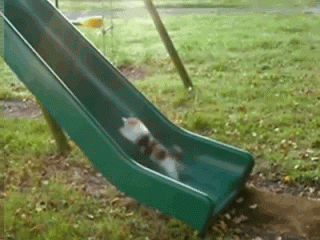
3. Eat well
Your brain needs a mix of nutrients in order to stay healthy and function well, just like the other organs in your body. A diet that’s good for your physical health is also good for your mental health.

4. Drink sensibly
We often drink alcohol to change our mood. Some people drink to deal with fear or loneliness, but the effect is only temporary.
When the drink wears off, you feel worse because of the way the alcohol has affected your brain and the rest of your body. Drinking is not a good way to manage difficult feelings.
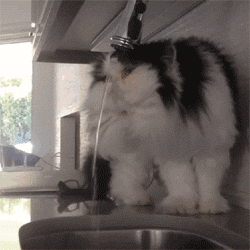
5. Keep in touch
There’s nothing better than catching up with someone face to face, but that’s not always possible. You can also give them a call, drop them a note, or chat to them online instead. Keep the lines of communication open: it’s good for you!
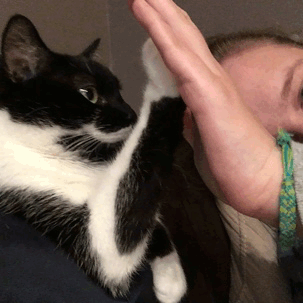
6. Ask for help
None of us are superhuman. We all sometimes get tired or overwhelmed by how we feel or when things don’t go to plan.
If things are getting too much for you and you feel you can’t cope, ask for help. Your family or friends may be able to offer practical help or a listening ear.
Local services are there to help you.
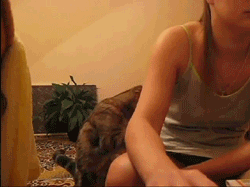
7. Take a break
A change of scene or a change of pace is good for your mental health.
It could be a five-minute pause from cleaning your kitchen, a half-hour lunch break at work, or a weekend exploring somewhere new. A few minutes can be enough to de-stress you. Give yourself some ‘me time’.

8. Do something you’re good at
What do you love doing? What activities can you lose yourself in? What did you love doing in the past?
Enjoying yourself can help beat stress. Doing an activity you enjoy probably means you’re good at it, and achieving something boosts your self-esteem.

9. Accept who you are
We’re all different. It’s much healthier to accept that you’re unique than to wish you were more like someone else. Feeling good about yourself boosts your confidence to learn new skills, visit new places and make new friends. Good self-esteem helps you cope when life takes a difficult turn.

10. Care for others
‘Friends are really important… We help each other whenever we can, so it’s a two-way street, and supporting them uplifts me.’
Caring for others is often an important part of keeping up relationships with people close to you. It can even bring you closer together.
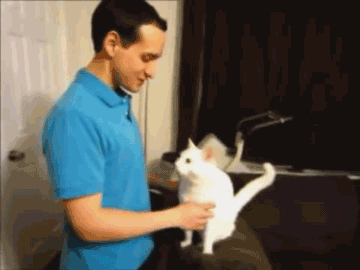
(Source: mentalhealth.org.uk)




“Imagine if men were as disgusted with rape as they are with periods,” street art activist Elonë writes on one pad. This particular message embodies her project’s aim: On one hand, women’s bodies are vandalized, harassed and objectified. On the other, they are often erased when it comes to the reality of menstruation. This is the exact conversation we need to be having.
Solitude matters, and for some people, it’s the air they breathe
Susan Cain (via fyp-psychology)
-
 neuro-lab liked this · 2 years ago
neuro-lab liked this · 2 years ago -
 valiantsuitcasewagonwinner liked this · 6 years ago
valiantsuitcasewagonwinner liked this · 6 years ago -
 natural--lighting reblogged this · 7 years ago
natural--lighting reblogged this · 7 years ago -
 green-eyed-black-dragon liked this · 7 years ago
green-eyed-black-dragon liked this · 7 years ago -
 1supergirlnot-blog reblogged this · 7 years ago
1supergirlnot-blog reblogged this · 7 years ago -
 1supergirlnot-blog liked this · 7 years ago
1supergirlnot-blog liked this · 7 years ago -
 bookwormbreederz liked this · 7 years ago
bookwormbreederz liked this · 7 years ago -
 thebejeweledpotatoe reblogged this · 7 years ago
thebejeweledpotatoe reblogged this · 7 years ago -
 samiilp liked this · 7 years ago
samiilp liked this · 7 years ago -
 victoriaswhims liked this · 7 years ago
victoriaswhims liked this · 7 years ago -
 lightofevolution reblogged this · 7 years ago
lightofevolution reblogged this · 7 years ago -
 lightofevolution liked this · 7 years ago
lightofevolution liked this · 7 years ago -
 refictionista reblogged this · 7 years ago
refictionista reblogged this · 7 years ago -
 anasophw reblogged this · 8 years ago
anasophw reblogged this · 8 years ago -
 hella-smart-nerd reblogged this · 8 years ago
hella-smart-nerd reblogged this · 8 years ago -
 surgicaljunkie reblogged this · 8 years ago
surgicaljunkie reblogged this · 8 years ago -
 future-wave-blog reblogged this · 8 years ago
future-wave-blog reblogged this · 8 years ago -
 aliciavignalats reblogged this · 8 years ago
aliciavignalats reblogged this · 8 years ago -
 aliciavignalats liked this · 8 years ago
aliciavignalats liked this · 8 years ago -
 those-interstitial-spaces reblogged this · 8 years ago
those-interstitial-spaces reblogged this · 8 years ago -
 salt-kissed reblogged this · 8 years ago
salt-kissed reblogged this · 8 years ago -
 salt-kissed liked this · 8 years ago
salt-kissed liked this · 8 years ago -
 zilan-robiten liked this · 8 years ago
zilan-robiten liked this · 8 years ago -
 brezzy88 reblogged this · 8 years ago
brezzy88 reblogged this · 8 years ago -
 brezzy88 liked this · 8 years ago
brezzy88 liked this · 8 years ago -
 the-found-princess reblogged this · 8 years ago
the-found-princess reblogged this · 8 years ago -
 the-found-princess liked this · 8 years ago
the-found-princess liked this · 8 years ago -
 natural--lighting reblogged this · 8 years ago
natural--lighting reblogged this · 8 years ago -
 star-crossedloker reblogged this · 8 years ago
star-crossedloker reblogged this · 8 years ago -
 star-crossedloker liked this · 8 years ago
star-crossedloker liked this · 8 years ago -
 girlguideskickass liked this · 8 years ago
girlguideskickass liked this · 8 years ago -
 blogfordantreacy reblogged this · 8 years ago
blogfordantreacy reblogged this · 8 years ago -
 andgreenandbrownandblue reblogged this · 8 years ago
andgreenandbrownandblue reblogged this · 8 years ago -
 raccoonscity liked this · 8 years ago
raccoonscity liked this · 8 years ago -
 chowdeee reblogged this · 8 years ago
chowdeee reblogged this · 8 years ago -
 chowdeee liked this · 8 years ago
chowdeee liked this · 8 years ago -
 thehighpriestessof9 reblogged this · 8 years ago
thehighpriestessof9 reblogged this · 8 years ago -
 embrewing reblogged this · 8 years ago
embrewing reblogged this · 8 years ago -
 embrewing liked this · 8 years ago
embrewing liked this · 8 years ago -
 lustrousangrystar liked this · 8 years ago
lustrousangrystar liked this · 8 years ago -
 cool-a-literal-asshole-blog liked this · 8 years ago
cool-a-literal-asshole-blog liked this · 8 years ago -
 vintagemarlene liked this · 8 years ago
vintagemarlene liked this · 8 years ago -
 rad-hippie-vibes reblogged this · 8 years ago
rad-hippie-vibes reblogged this · 8 years ago
Dear Readers,Welcome to my personal blog. I'm Sabyasachi Naik (Zico,24).An Agnostic,deeply NON religious(atheist), and Secular Progressive Civil Engineer . I'm brown and proud to be an Indian tribe. “I want to say a word to the Brahmins: In the name of God, religion, sastras you have duped us. We were the ruling people. Stop this life of cheating us from this year. Give room for rationalism and humanism.” ― Periyar E.V. Ramasamy
198 posts